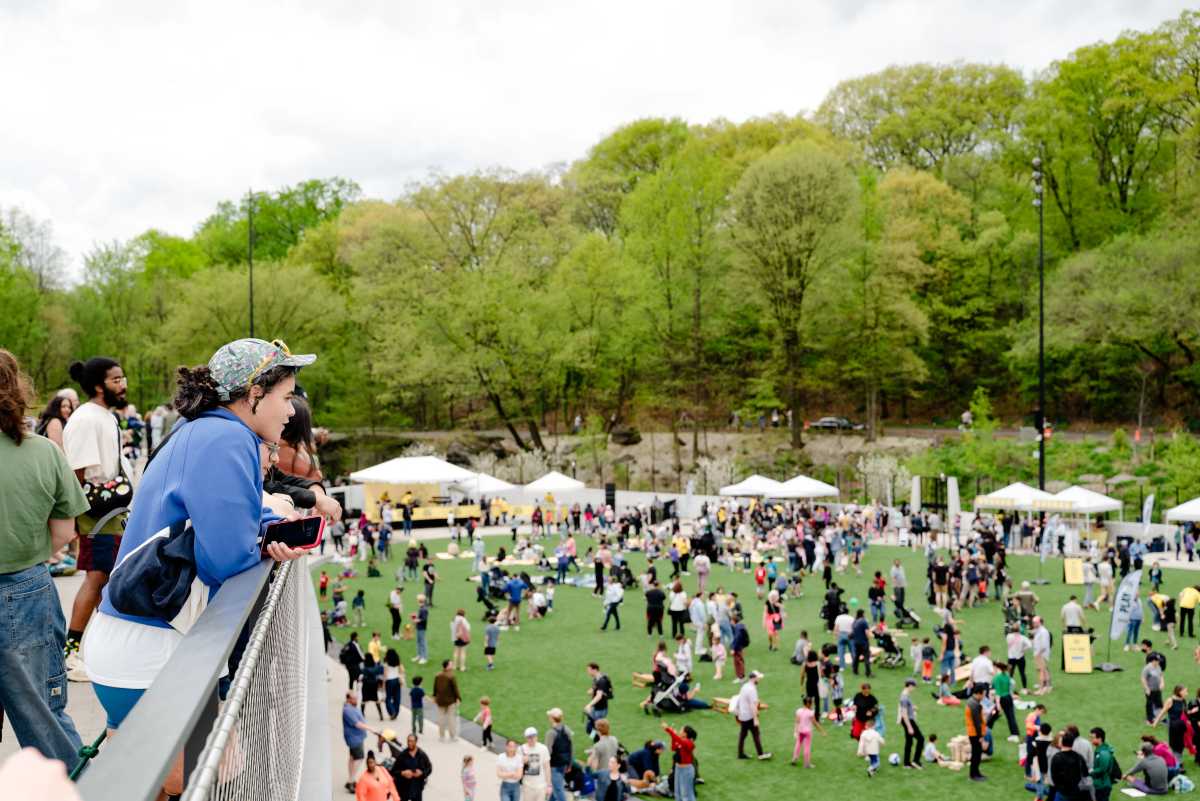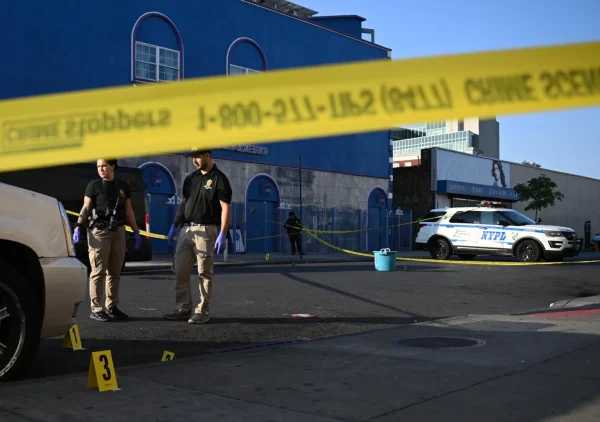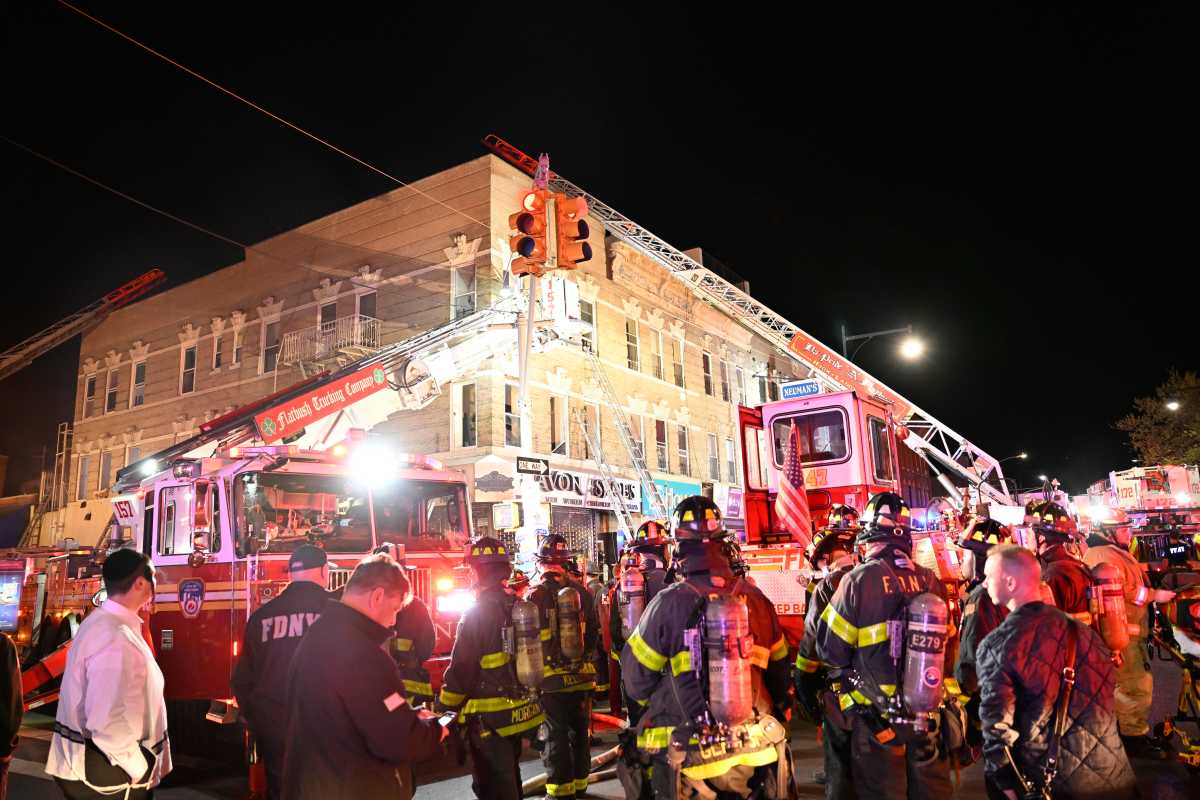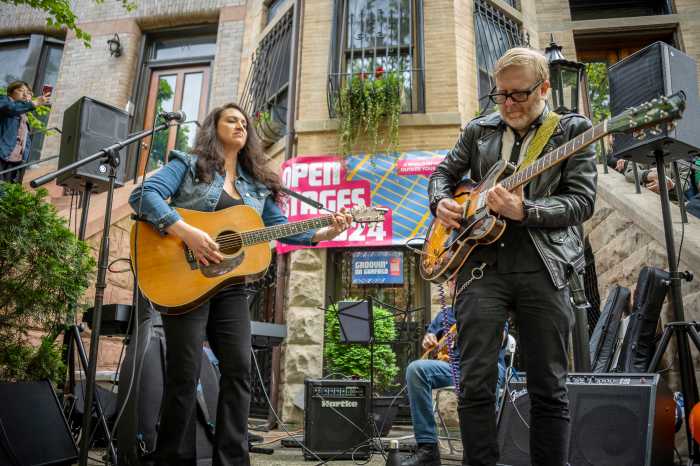Go and dance yourself clean.
Brooklyn’s largest general admission venue, Brooklyn Steel, opened Thursday with a sold-out, five-day residency from the borough’s own LCD Soundsystem.
Located inside an industrial East Williamsburg space that inspired its name, the 1,800-capacity venue from Bowery Presents features raised platforms, a horseshoe mezzanine, three bars and, yes, hundreds of tons of steel — either visible in the building’s construction or repurposed for detail.
John Moore and Jim Glancy, partners in the Bowery Presents, have enjoyed paying homage to the buildings they move into. When the Music Hall of Williamsburg opened in 2007, the pair had renovated that show space to highlight features of the former mayonnaise factory housed there — sans mayo, of course. This time, the transformation was a bit more literal.
“It’s a steel fabrication plant and we wanted to embrace that and use as much of the original aesthetic as we could,” said Moore.
Brooklyn Steel is much larger than Bowery Presents’ other venues in the borough. The Music Hall of Williamsburg has a capacity of about 650; Rough Trade can fit less than half that amount. Every inch will be valuable with LCD Soundsystem in town. After a 2016 reunion of sorts, James Murphy’s group has played sparsely, at high-profile music festivals.
They’ll be followed by top-notch talent this spring. Pixies, The Jesus and Mary Chain and Animal Collective all have dates at the venue through May.
“We had been looking all over Brooklyn,” said Glancy, who began the hunt for the venue with Moore nearly four years ago. “We felt there was a void in the marketplace and felt a need for a larger general admission room.”
They have stressed the importance of acoustics and line of sight at their venues and Brooklyn Steel is no different, they said. But unlike their other spaces, Brooklyn Steel will feature a moveable stage that could shrink capacity to 1,200 for smaller acts. Sound system speakers will hang from a functioning gantry crane. The crane complements the industrial setting, but it also can lower the speakers to help create a cozier setting.
Moore and Glancy view the flexibility of the venue as a way attract popular acts while also serving as a stepping stone for mid-level performers in New York. “We see it as an important step in artists’ development,” said Glancy.
At 319 Frost St., the venue is smack in the middle of a still fairly quiet, industrial area of Brooklyn. It’s a ten-minute walk from the L train’s Graham Avenue station and nearly a 20-minute walk from the next closest subway, the Nassau Avenue stop on the G line. Despite the impending L train shutdown, experts see the venue, and the surrounding area, as thriving in the future.
“People live up there, but it’s still a no man’s land. There isn’t a lot of businesses. It should attract some more,” said Nathaniel Whelton, licensed real estate agent for Citi Habitats. “There are people who are going to flee the neighborhood [during the L train shutdown] but there will still be some who will dig in and reap the benefits. That will probably be the people who want to hear LCD Soundsystem.”
Grant Long, a senior economist at StreetEasy, doesn’t see Brooklyn Steel as having a huge impact on residential real estate, but he believes the venue can help keep the businesses in the area afloat while encouraging new shops to move in.
“Opening a music venue like that will keep those bars and restaurants open. It will be a boon for them,” Long said. “Having this as a neighborhood anchor will help the surrounding area and encourage other developers to create more venues — whether that’s restaurants or bars or other less traditional venues.”
































